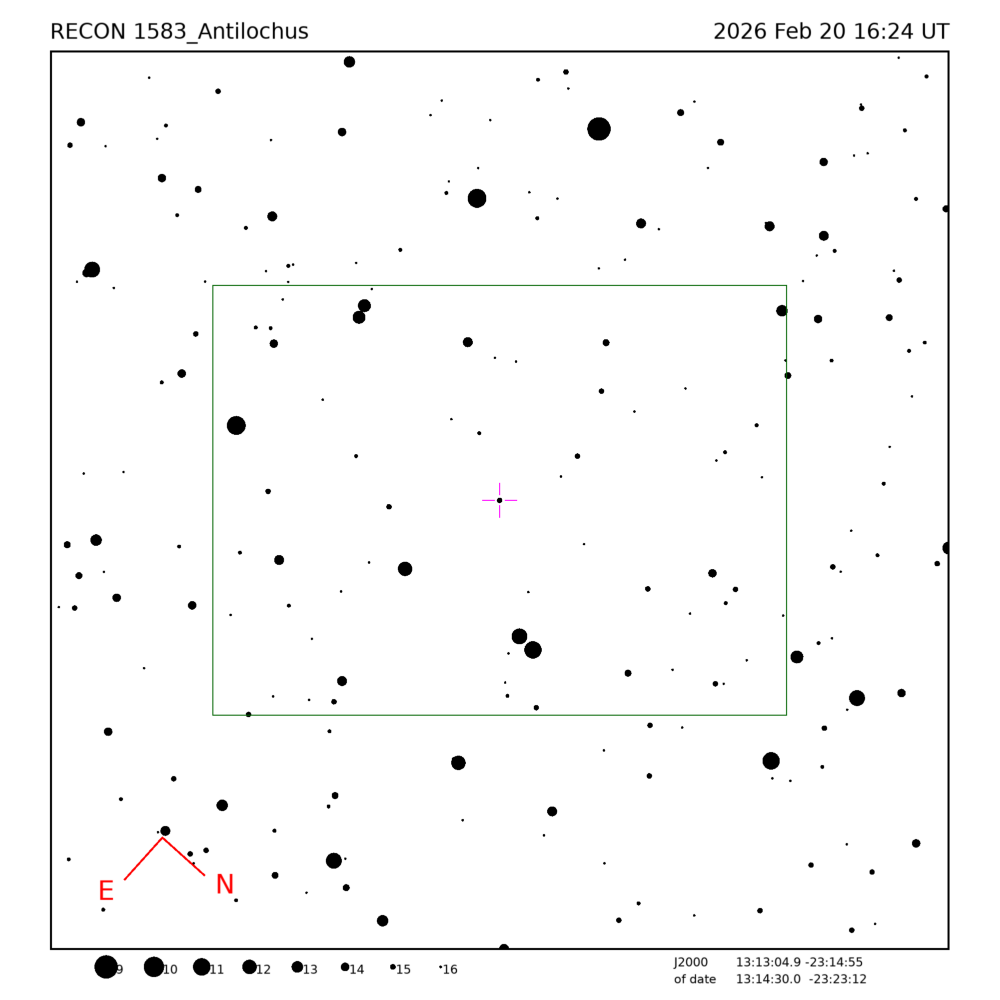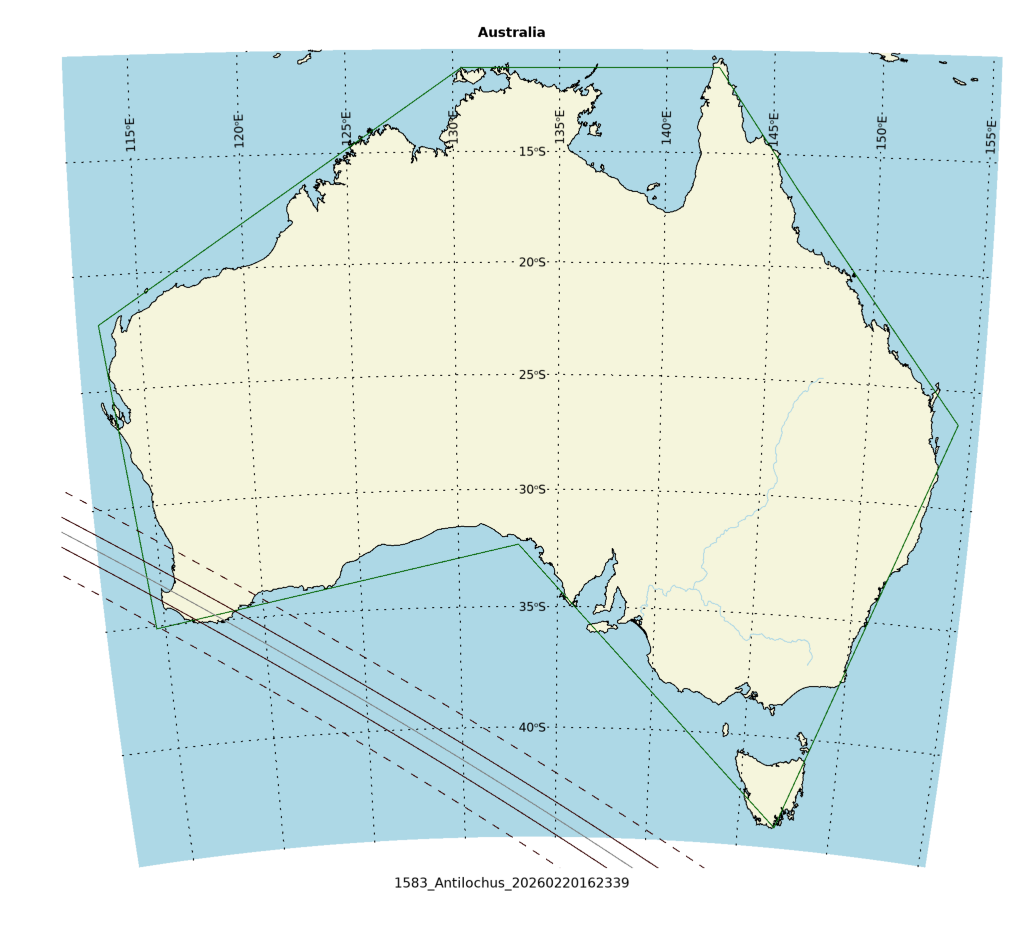
Occultation event with (1583) Antilochus, event index number 3277
Regions able to see the event: Australia
Geocentric closest approach at 2026/02/20 16:23:39 UTC
J2000 position of star is 13:13:04.9 -23:14:55
Equinox of date position of star is 13:14:30.0 -23:23:12
Star is 162 degrees from the moon. Moon is 12% illuminated.
Stellar brightness G=16.0, apparent brightess of occulting body is G=14.0
Use an exposure time of 2.00 seconds with the standard RECON-QHY system.
SNR of 5.4 per integration for unocculted signal
Expected flux drop is 14% with SNR of 0.8 for the occulted depth (per occulted point)
Apparent velocity is 6.4 km/sec on the sky relative to the star, or, 6.7 arcsec/hr.
Position angle of asteroid motion is 111.2 degrees
The recommended exposure time corresponds to 12.8 km per image.
The 1-sigma error in the time of the event is 1.5 seconds.
The 1-sigma cross-track error in the shadow position is 33.0 km.
The sky-plane scale is 3440.5 km/arcsec.
Diameter estimates:
116.4 km assuming a 5% albedo, maximum of 18.1 sec for a central chord
47.5 km assuming a 30% albedo, maximum of 7.4 sec for a central chord
Cross-track diameter of 108.8 km used for deployment plan.
Star training set for 1583_Antilochus, (2026/02/20 16:24UT) Object RA Dec mag sep mel Spica 13:26:34.4 -11:17:49 1.0 12.43 168 9Bet Crv 12:35:45.9 -23:32:27 2.6 8.88 164 45Psi Hya 13:10:28.1 -23:15:26 4.9 0.93 163 PPM 261283 13:11:34.4 -23:33:13 8.4 0.69 162 PPM 261348 13:14:09.7 -23:06:47 9.0 0.28 162 1583_Antilochu 13:14:30.0 -23:23:12 14.0 162 Positions are for equinox of date


Star training set for 1583_Antilochus, (2026/02/20 16:24UT) Object RA Dec mag sep mel Spica 13:25:11.5 -11:09:41 1.0 12.43 168 9Bet Crv 12:34:23.2 -23:23:50 2.6 8.88 164 45Psi Hya 13:09:03.2 -23:07:06 4.9 0.93 163 PPM 261283 13:10:09.4 -23:24:54 8.4 0.69 162 PPM 261348 13:12:44.6 -22:58:30 9.0 0.28 162 1583_Antilochu 13:13:04.9 -23:14:55 14.0 162 Positions are for J2000